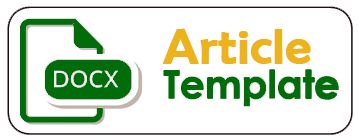Edukasi Pentingnya Gizi Seimbang pada Remaja di SMPN 23 Kota Serang
DOI:
https://doi.org/10.36565/jak.v6i2.722Keywords:
adolescent, balanced nutrition, educationAbstract
Growth and development enhancement during adolescence is the reason for the increased nutritional needs of adolescents. Lack of educational exposure related to nutrition is a trigger for unhealthy food choices. This education aims to provide education to increase understanding of the importance of balanced nutrition in adolescents. The education was held in September 2023 at SMPN 23 Serang City involving 150 students. Education is given through active lecture and question-answer methods using PowerPoint media. The results of the evaluation were measured by giving several questions related to balanced nutrition before and after present the education. Students can explain the composition and distribution of portions on one dinner plate and can mention the distribution of nutritionally balanced food portions in one day. It can be concluded that education using PowerPoint media for adolescents is effective in increasing students' knowledge about the importance of balanced nutritionReferences
Februhartanty, J., Ermayani, E., Rachman, P. H., Dianawati, H. & Harsian, H. Gizi dan Kesehatan Remaja. (2019).
Soliman, A. et al. Nutritional interventions during adolescence and their possible effects. Acta Biomed. 93, 1–14 (2022).
Deepika Mehrish Sharma, Roland Kupka, Vilma Tyler & Victor Aguayo. Programming Guidance : Nutrition In Middle Childhood and Adolescents. UNICEF Program. Div. 9–20 (2021).
Mukanu, M. M., Delobelle, P., Thow, A. M. & Mchiza, Z. J. R. Determinants of dietary patterns in school going adolescents in Urban Zambia. Front. Nutr. 9, (2022).
Joulaei, H., Keshani, P. & Kaveh, M. H. Nutrition literacy as a determinant for diet quality amongst young adolescents: A cross sectional study. Prog. Nutr. 20, 455–464 (2018).
Silalahi, V. C. R., Sufyan, D. L., Wahyuningsih, U. & Puspareni, L. D. Pengetahuan Pedoman Gizi Seimbang Dan Perilaku Pilihan Pangan Pada Remaja Putri Overweight: Studi Kualitatif. J. Nutr. Coll. 9, 258–266 (2020).
Riskesdas. Laporan Nasional Riset Kesehatan Dasar Tahun 2018. (2018).
Rachmi, C. N., Jusril, H., Ariawan, I., Beal, T. & Sutrisna, A. Eating behaviour of Indonesian adolescents: a systematic review of the literature. Public Health Nutr. 24, S84–S97 (2021).
Madinah, S., Rahfiludin, M. Z. & S. A, N. Pengaruh Pendidikan Kesehatan Reproduksi Terhadap Tingkat Pengetahuan Tentang Pendewasaan Usia Perkawinan. J. Kesehat. Masy. 5, 332–340 (2017).
Sulaeman, A. Microsoft PowerPoint Media Use and Student Learning Motivation in Islamic Religious Education. AL-ISHLAH J. Pendidik. 13, 2931–2938 (2021).
Rachmi, C. N. et al. Buku Panduan untuk Siswa; Aksi Bergizi, Hidup Sehat Sejak Sekarang untuk Remaja Kekinian. Unicef (Kementerian Kesehatan RI, 2019).
Kementerian Kesehatan RI. Peraturan Menteri Kesehatan Republik Indonesia Nomor 41 Tahun 2014 Tentang Pedoman Gizi Seimbang. 1–96 at (2014).
Siagian, E. Balanced Nutrition Education on Knowledge and Attitudes of Adolescents in The Time of. Indones. Nurs. Sci. J. 13, 41–47 (2023).
Downloads
Published
Issue
Section
License
Authors who publish with this journal agree to the following terms:
- Authors retain copyright and grant the journal right of first publication with the work simultaneously licensed under a Creative Commons Attribution License that allows others to share the work with an acknowledgment of the work's authorship and initial publication in this journal.
- Authors are able to enter into separate, additional contractual arrangements for the non-exclusive distribution of the journal's published version of the work (e.g., post it to an institutional repository or publish it in a book), with an acknowledgment of its initial publication in this journal.
- Authors are permitted and encouraged to post their work online (e.g., in institutional repositories or on their website) prior to and during the submission process, as it can lead to productive exchanges, as well as earlier and greater citation of published work (See The Effect of Open Access).








